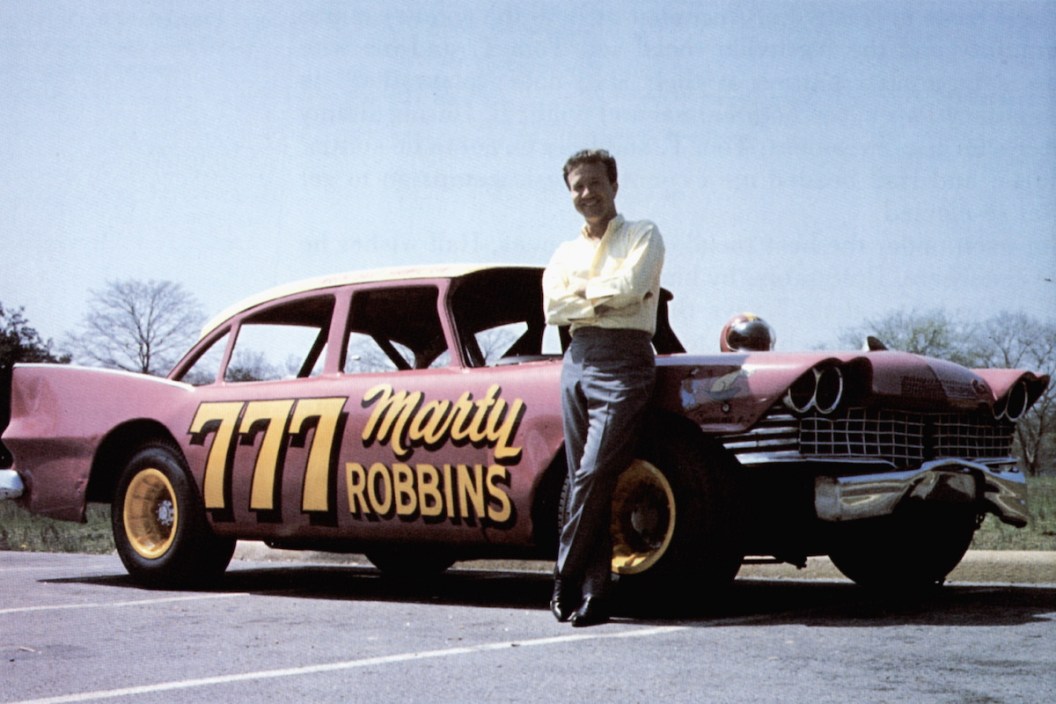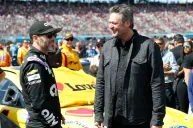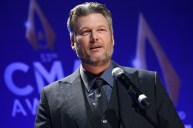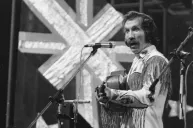Legendary country superstar Marty Robbins' high-profile and high-octane hobby found him driving a few trips around the race track with such NASCAR royalty as Richard Petty, Darrell Waltrip and Bobby Allison. It wasn't Garth Brooks taking a few at-bats during spring training for a good cause or anything that could be dismissed as a publicity stunt. Instead, Robbins had a decent motorsports career, making him more than a novelty attraction or goodwill ambassador.
Videos by Wide Open Country
An Arizona native, Robbins grew up at a time when Bettenhausen was as revered a surname to racing enthusiasts as Acuff or Autry was to fans of all things country and western. Spending time in Hawaii while in the military sparked a lifelong interest in performing music, but fast times ahead as a future Country Music Hall of Fame member never entirely overshadowed his appreciation for faster cars.
After Little Jimmy Dickens lured the future Grand Ole Opry star to Nashville, Robbins and his son Ronny became regular spectators at the Nashville Fairgrounds Speedway. Eventually, the country singer, best known for "Big Iron" and "El Paso," invested in his first car. It was the souped-up Ford Coupe often called the "Devil Woman" car.
A Competitive Part-Timer
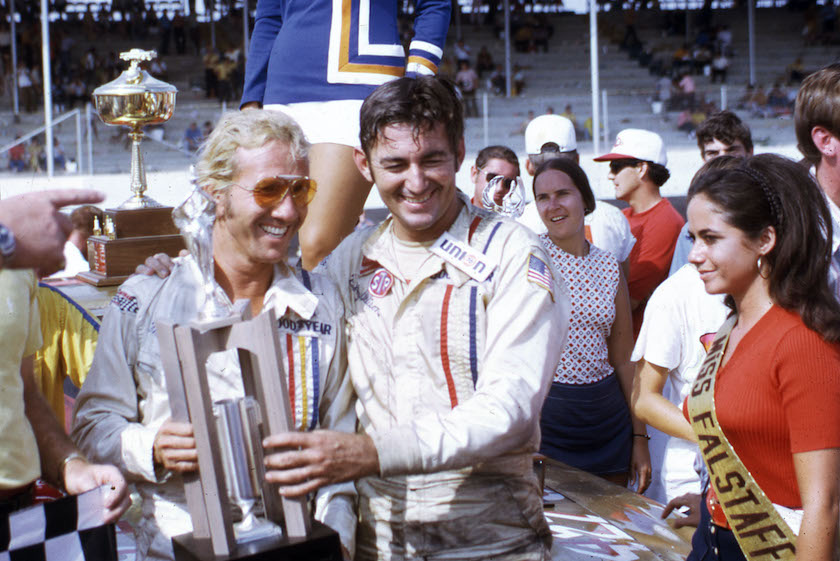
Marty Robbins (L) joins Bobby Allison in victory lane at Darlington Raceway after Allison won the Southern 500 NASCAR Cup race. Country music entertainer Robbins, who dabbled in Cup racing off and on, had one of his best career finishes in the event, taking seventh place. (ISC Images & Archives via Getty Images)
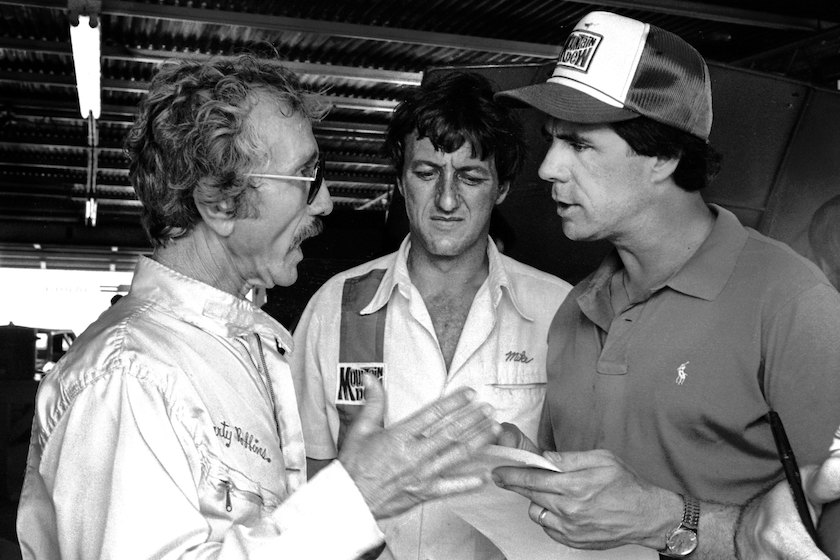
DAYTONA BEACH, FL - JULY, 1981: Darrell Waltrip, talks with fellow driver and country music singer Marty Robbins, left, during qualifying for the 1981 Firecracker 400 at the Daytona International Speedway in Daytona Beach, Florida. (Photo by Robert Alexander/Archive Photos/Getty Images)
By the 1966 race in Nashville, Robbins had the equipment and raw talent to try his hand at big-league stock car racing. A 25th place finish (Richard Petty netted one of 200 career victories that afternoon) launched a 13-year NASCAR career as a part-timer.
After participating in just one race per year in 1966, 1968 and 1970, Robbins competed 20 times across the following five years. With little professional on-track experience, Robbins did quite well from 1971 to '76, notching six top 10 finishes (two of which came at Darlington Raceway) in the NASCAR Grand National Series. This included a top-five performance at the Michigan International Speedway's Motor State 400. He also had a strong performance at the 1972 Talladega 500 and 1973 Daytona 500.
Despite his sustained success, Robbins' most famous moment in NASCAR lore came far from the finish line. At the 1974 Charlotte 500, Robbins collided with a wall on purpose to keep from t-boning the car of racer and future team owner Richard Childress. This rash, dangerous decision may have saved Childress' career or life.
In another famous incident covered by Whiskey Riff, Robbins surprised peers and spectators when his car ran 15 mph faster during the 1972 Winston 500 than it had during his qualifying laps. Despite dropping out of the race early, Robbins got offered Rookie of the Race recognition. He declined the award and forfeited his winnings while admitting that he'd knowingly broke carburetor restrictions because he "just wanted to see what it was like to run up front for once."
Robbins raced sporadically until the end. His final NASCAR appearance came at the 1982 Atlanta Journal 500, held a little over a month before the country music legend's untimely death. The following season, the Coors 420 at the Nashville International Speedway was renamed to the Marty Robbins 420.
The Nudie Suit of Race Cars
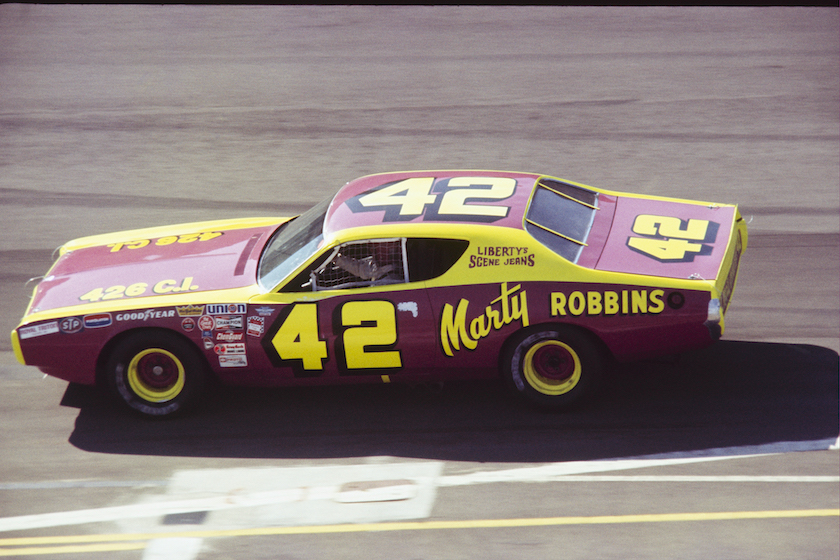
Gerry Stiles/The Enthusiast Network via Getty Images/Getty Images
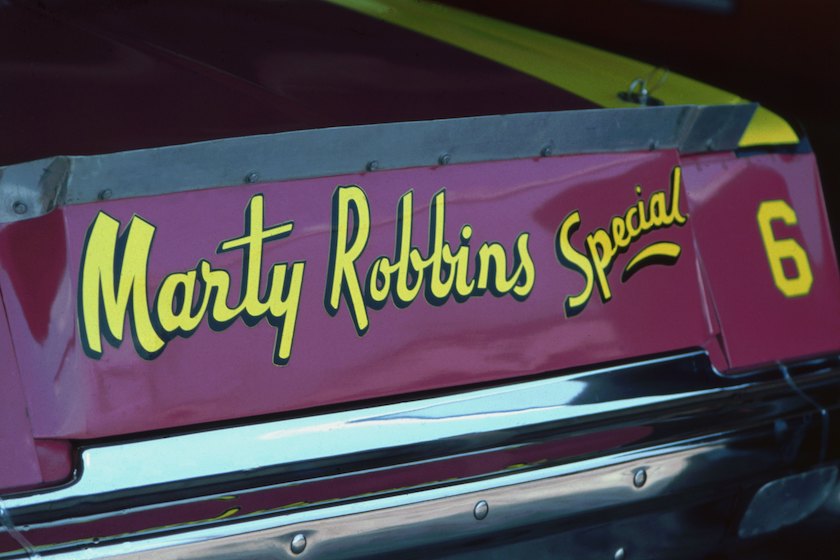
Robert Alexander/Archive Photos/Getty Images
In the spirit of his era's country singers and their wardrobe choices, Robbins brought a bold, colorful look to the track. The various cars Cotton Owens built for Robbins sported variations of an eye-catching, two-toned magenta and chartreuse paint scheme.
READ MORE: 'Something Like That': The Story Behind Tim McGraw's Nostalgic Ode to Summer Love
This article was originally published in April of 2018.
